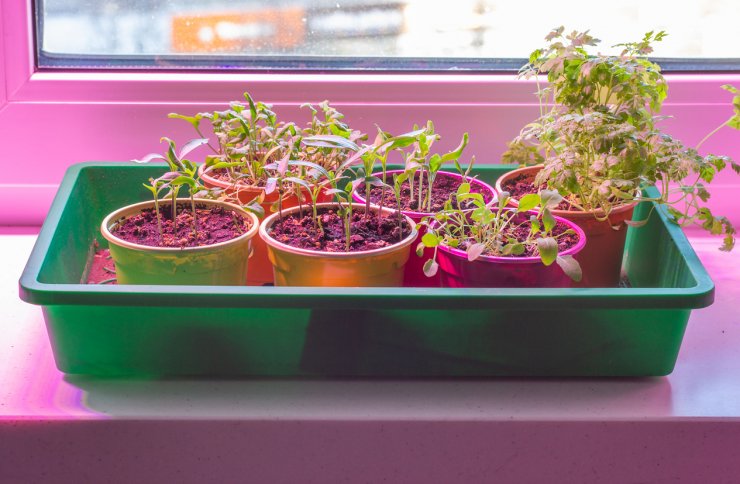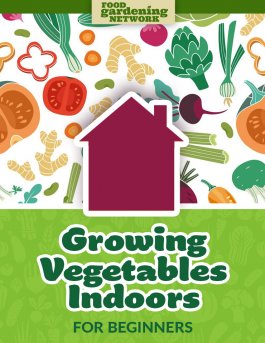
Seedlings under indoor garden lights.
When I first started gardening, I never expected that gardening lights would be something I’d consider. People have planted gardens for thousands of years without any lighting other than the sun. Even houseplants can thrive with just the sunlight coming through the windows.
But I don’t live in a warm, sunny climate. Summer is great, of course, but most years there isn’t much growing in any gardens around here after late November. And since I love to cook and I adore fresh produce, I gradually began experimenting with indoor gardening. One of the first things I learned was that if I wanted anything more than a few herbs on the kitchen windowsill, gardening lights were going to be a necessity.
Discover the 3 top options for growing vegetables indoors—when you access the FREEBIE Growing Vegetables Indoors for Beginners, right now!
How to choose the right type of gardening lights for your indoor garden
As you can imagine, there are plenty of choices out there for indoor gardening lights. They can range pretty substantially in style, size, price, and effectiveness. Some need to be hardwired into your electrical system, while others just need to be plugged into an outlet. Then there’s LED, fluorescent, HID, full-spectrum – honestly, it can get a bit overwhelming. I know it was for me when I first started looking at them.
What you choose will depend on factors such as what you’re growing, how much space you have, and how hands-on or hands-off you want to be. Here’s a breakdown of three different common types of gardening lights, along with the pros and cons of each.
Fluorescent gardening lights. Fluorescent lights come in two common sizes: T12 and T5. The “T” refers to the type of light, in this case, a tube. The number is the size. The T12 is your typical standard fluorescent bulb. You can find them in drop ceilings and dressing rooms the world over. The T5 is smaller, brighter, and more energy efficient than the T12. Many T5 bulbs provide a full spectrum of lighting which plants need to grow properly. You can buy either hardwired or plug-in fixtures for fluorescent gardening lights. Even though these lights are much more efficient than the standard incandescent bulbs, they are the least efficient as far as specialty indoor gardening lights are concerned.
LED gardening lights. LEDs are the new popular kid on the light block, and with good reason. They’re super energy efficient, long lasting, and bright as heck. They also emit very little heat, which is an important factor in keeping your garden from overheating. Be aware, however, that if you choose LED lighting, you’ll need to be sure to buy full-spectrum lights. That’s not a given with most LED lights.
HID gardening lights. Fairly new to the lighting scene is the High-Intensity Discharge (HID) light. These are more common in commercial growing facilities, but they are gradually getting more affordable and available for individual gardeners. Some of them can emit quite a bit of heat, however, and two different versions – metal halide and high pressure sodium – put out different spectrums of light. That means you’ll need both types of light for your plants to get what they need. There are also newer ceramic metal halides that do emit a full spectrum of light, but they aren’t cheap. One other drawback to HID lighting is that you need a special fixture; you can’t just plug them into any old light socket.
For my purposes, I find that LED lights are ideal. They’re easy to work with and common enough that I don’t have to look very far to find what I need. But there’s nothing wrong with using fluorescent lighting if you already have it.
Do you have a favorite type of light for indoor gardening? I’d love to hear about your experiences with them.
Discover the 3 top options for growing vegetables indoors—when you access the FREEBIE Growing Vegetables Indoors for Beginners, right now!




